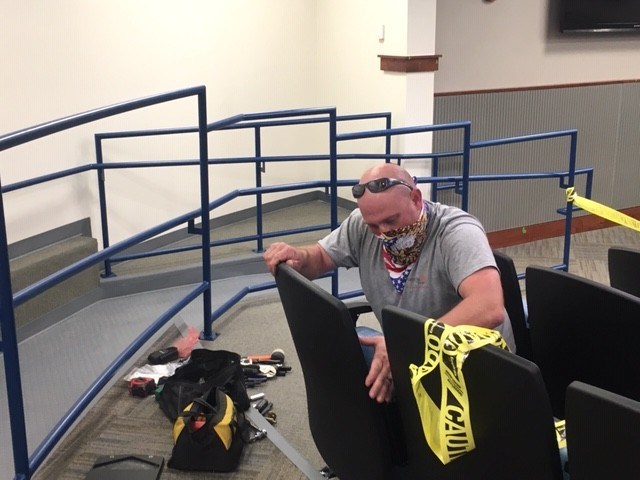The American with Disabilities Act has been around for three decades but at the city of Longmont, ensuring access is a constant process.
The ADA, signed by President George H.W. Bush on July 26, 1990, bans discrimination on the basis of disability in the areas of employment, public accommodation, public services, transportation and telecommunications.
The city in 2015 completed an ADA transition plan assessing its facilities and buildings, and each year has been working to implement needs or upgrades it identified, said Joanne Zeas, chief human resources officer and ADA coordinator.
Annually, $100,000 is set aside from the Capital Improvement Program for such projects, she said.
A remodeling of City Council Chambers is probably the biggest recent ADA-related project, Zeas said.
Council Chambers were revamped at a cost of $728,157, and the work incorporates two capital projects — ADA improvements and the remodeling of the room, according to Assistant City Manager Sandi Seader.
“The ADA improvements include a new ramp and railings, seating that allows for wheelchair spaces and companion seats, wider doors with a button opener, and accessible coffee/water bar,” Seader said via email.
ADA compliance also is front and center in the city’s Park Renewal Program, according to Kathy Kron, senior project manager with Parks, Open Space & Trails. When a park or a facility within a park is upgraded through the program, the city also addresses any ADA deficiencies, she said via email.
“Older city parks were compliant with the ADA at the time of their construction, however, the ADA has been updated over the years which requires the city to go back and bring them back into compliance when improvements are made,” Kron said.
The 2015 transition plan, which identified all of the deficiencies in city parks, acts as a guide to prioritize where the needs are,” she said.
One of the largest projects completed to date was bringing the Garden Acres Sports Complex into full compliance with the ADA, which was done in 2019, Kron said.
A list of projects where ADA improvements have been made can be viewed at the Park Renewal webpage.
“It’s also worth mentioning that all new parks and facilities are built to meet ADA requirements from the get-go,” Kron said. “The city has had a long-standing commitment toward accessibility and meeting ADA standards. When working on park projects, whether it’s a new park or upgrades to an existing park, the community and neighborhood are always involved and we find that the Longmont community has a vested interest in accessibility in their parks. Even kids of elementary school age tell us how they want their park and playground to allow kids and adults of all abilities to be able to play together — how great is that?”
The city also keeps ADA compliance at the forefront as it works to update its website and web editors are trained and updated on new laws, said web coordinator Susan Wolak.
There also are web-based forms for residents to report ADA-related grievances and requests for accommodation.
Public input is always welcome, as is a dialogue with residents about their concerns, Zeas said.
About 7% of the Longmont population younger than 65 was disabled in the four-year span between 2014 and 2018, according to U.S. Census Bureau data. For the same time frame, the Boulder County disabled population totaled 5% and the nationwide disabled population was 8.6%


